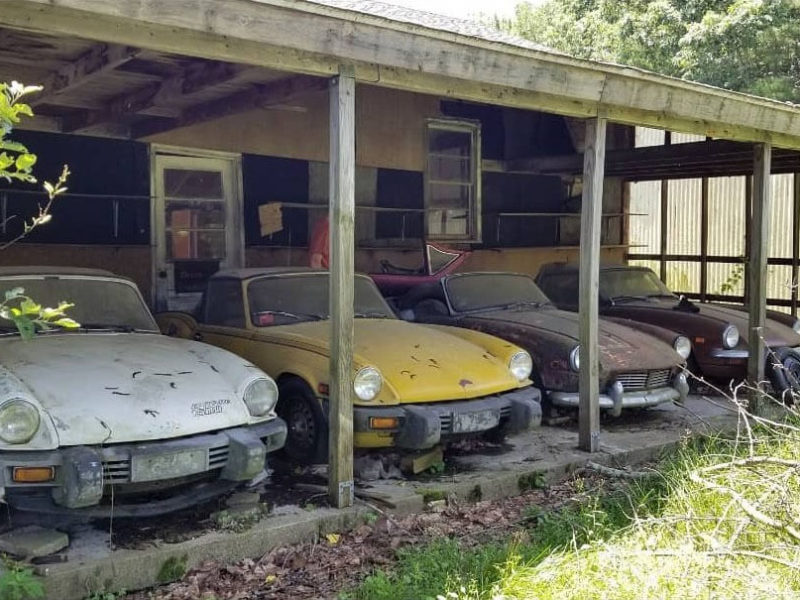Leaking Oil Seals
If your differential/rear axle oil seals are leaking, the seals themselves may not be at fault. A plugged breather may be causing pressure build-up within the differential, forcing oil past the seals. Locate the breather, clean around it, and remove it from the differential case. Clean the breather thoroughly, ensuring that it is not plugged, and re-install it.
Wire Wheel Hub Grease Cap Removal
Meredith Sutton
Anchorage. AK
Several issues ago, you carried a tech tip that detailed how to make a tool for extracting the grease hub from a wire wheel. While the method explained was alright, there is a much easier way.
Obtain a 5/16″ fine thread extra long nut and bolt. Screw the nut half way onto the bolt, and screw the collar to the screw fitting on the end of the grease hub. Then use any pry method on the head of the bolt and the hub will pop out.
Audible Directional Flasher
Frank Lindauer
Atlanta, GA
Here’s a tech tip for those of us whose hearing is not what it used to be when we were younger, or those of us who are younger and just can’t hear the directional flasher or see the flasher indicator light, especially with a top down in daylight. Since the time delay, even when set at max, does not give a long flashing interval, it is useful to know when it has stopped, in order to make turning intentions more obvious.
I purchased a Radio Shack catalog 12-volt mini buzzer (no. 273-055), for just under $3.00. Just mount it anywhere it is convenient under the dash and on the driver’s side. This is most easily done with double-backed foam mounting tape (3-M). Then run the black wire through the firewall and connect it to the center flasher terminal. Ground the red wire under the dash. This buzzer emits a sound that is not the most pleasant, so take one turn of black vinyl electrical tape around it to cover the sound louvers and mute the buzz.
Cylinder Head Studs
The four-cylinder engines found in TR2-4s seem to fall into two categories: those that motor on endlessly despite being thoroughly worn out, and those that can’t seem to shake persistent problems with head gaskets and overheating. With the increasing age of our engines, I think a quick refresher on cylinder head studs and nuts could help solve a lot of mysterious gasket failures and overheating problems.
First, the cylinder head studs. These are of grade-eight spec, and fully capable of handling the 105 ft/lbs of torque exerted on them when new. By design, every time you torque them, they are being stretched a bit. All metals have a “memory” to return to original shape, to a point. But by the time your engine is thirty years old, the studs, nuts, and washers can be hopelessly tired and replacements should be made. Stretched studs have an hourglass profile when carefully inspected against a straight edge. Stretched studs simply don’t have the tensile strength to hold the head down and as a result mysterious head gasket problems can develop. If you suspect that any of your studs are stretched, then all of them should be replaced.
Equally important are the nuts. Factory supplied nuts were approximately 1/2″ tall and when new, prove themselves entirely up to the task. With the nuts, you should use only the proper grade-eight flat washers. I’ve seen everything from spring-washers to nothing at all being used here. Don’t assume that what you have on your engine is up to spec., replace them as a matter of course, particularly if there is any indication that there is distortion. ‘
It’s often the most obscure things that causes big problems, so I hope this recap can save some of you a headache or two.
Vacuum Advance Pipe Trick
Michelle Dicus
Portland. OR
In my effort to restore my 1960 MGA to stock, I acquired one of the original vacuum pipe assemblies, Moss #163-620, that goes from the vacuum unit to the rear carburetor. 1 Intended to use this to replace the rubber tube/pipe set-up that was on my car. Of course, my vacuum unit is the newer type with a slip-on connection and the old style nut and compression fitting will not work with the new unit
My goal was to install the original vacuum pipe so it looked as stock as possible. Here’s what I did:
1. Remove the rear spark plug wire and the heater hose on the heater valve to clear access to the vacuum unit.
2. Use a die to put threads on the connecting end of the vacuum unit. I used a 10-32 die. Angle it carefully so it is perpendicular to the vacuum connection. To get a good grip on the die, I wrapped a fat rubber band around it (works for opening pickle jars too) and used a pair of heavy pliers to turn it. Thread the connecting end at least three-quarters of the way down its length.
3. At the distributor end of the pipe assembly is a brass nut that is held onto the pipe with a compression fitting. The pipe slides freely through the nut, stopped by the ferrule. The interior diameter of this nut is too large for the connecting end of the new vacuum unit.
Find another thin nut to match the hex size of the large brass nut (3/8″), and tap it to 10-32 to match the threads on the vacuum unit end.
4. Hold the new tapped nut onto the end of the large brass nut on the pipe. Make sure the pipe still has room to move up and down inside the nut. You will need to screw the new nut all the way down onto the end of the vacuum unit in order to get a good seal, so the pipe may have to be
cut to make space for the vacuum end, as it threads up into the nut. I used a jeweler’s saw to cut the pipe without crimping it.
5. Now solder the new nut onto the end of the brass nut on the pipe. I used silver solder and a small propane torch. Use only enough solder to mate the nut and fitting or you may ruin the threads in the new nut.
6. Polish the new nut assembly and screw in place until the pipe does not move freely
As an alternative to all this work, buy the rubber adaptor, Moss #371-805. You’ll spend about four hours less than I did on this project!







'Tech Tips: Winter 1991' has no comments
Be the first to comment this post!